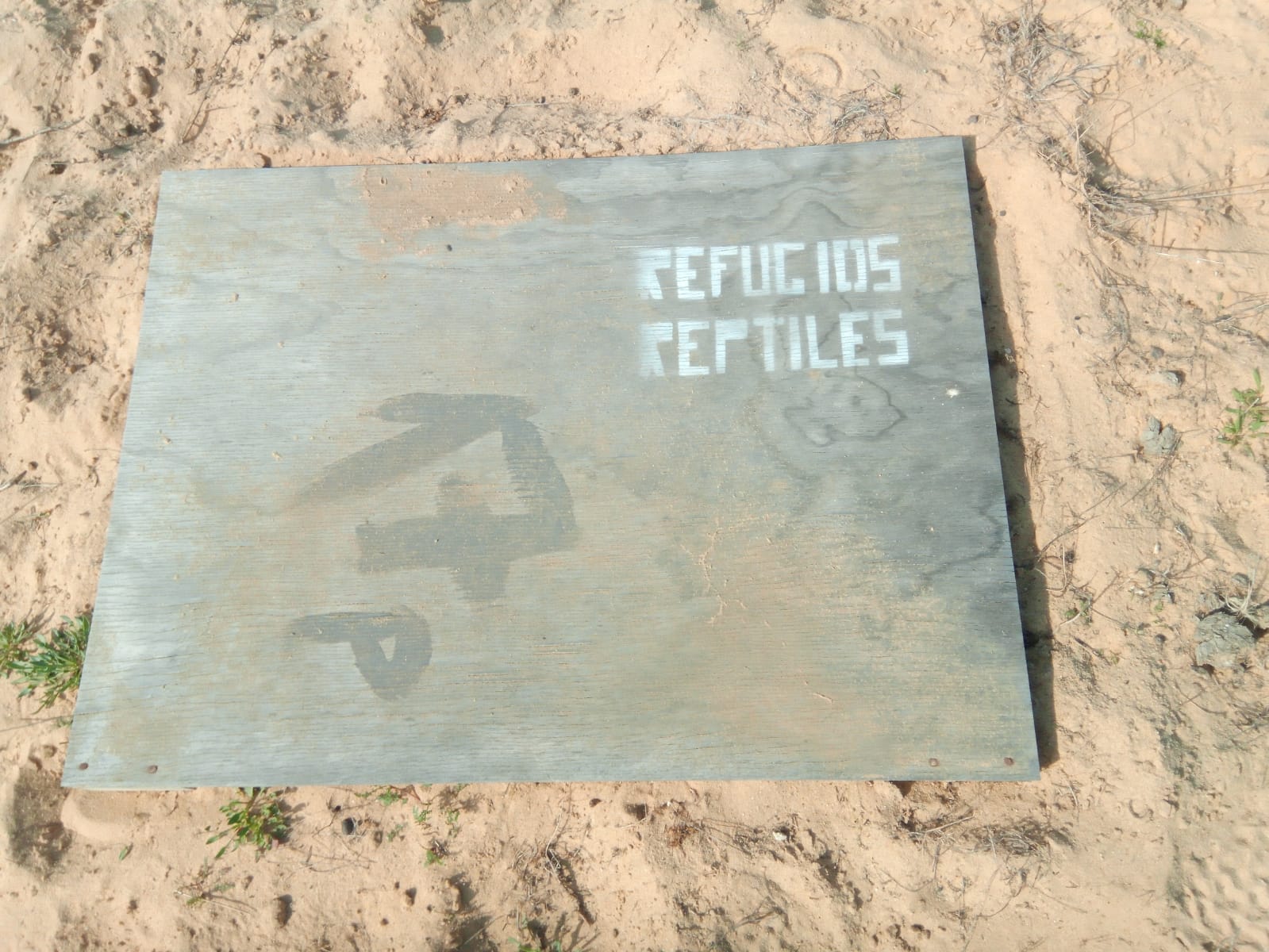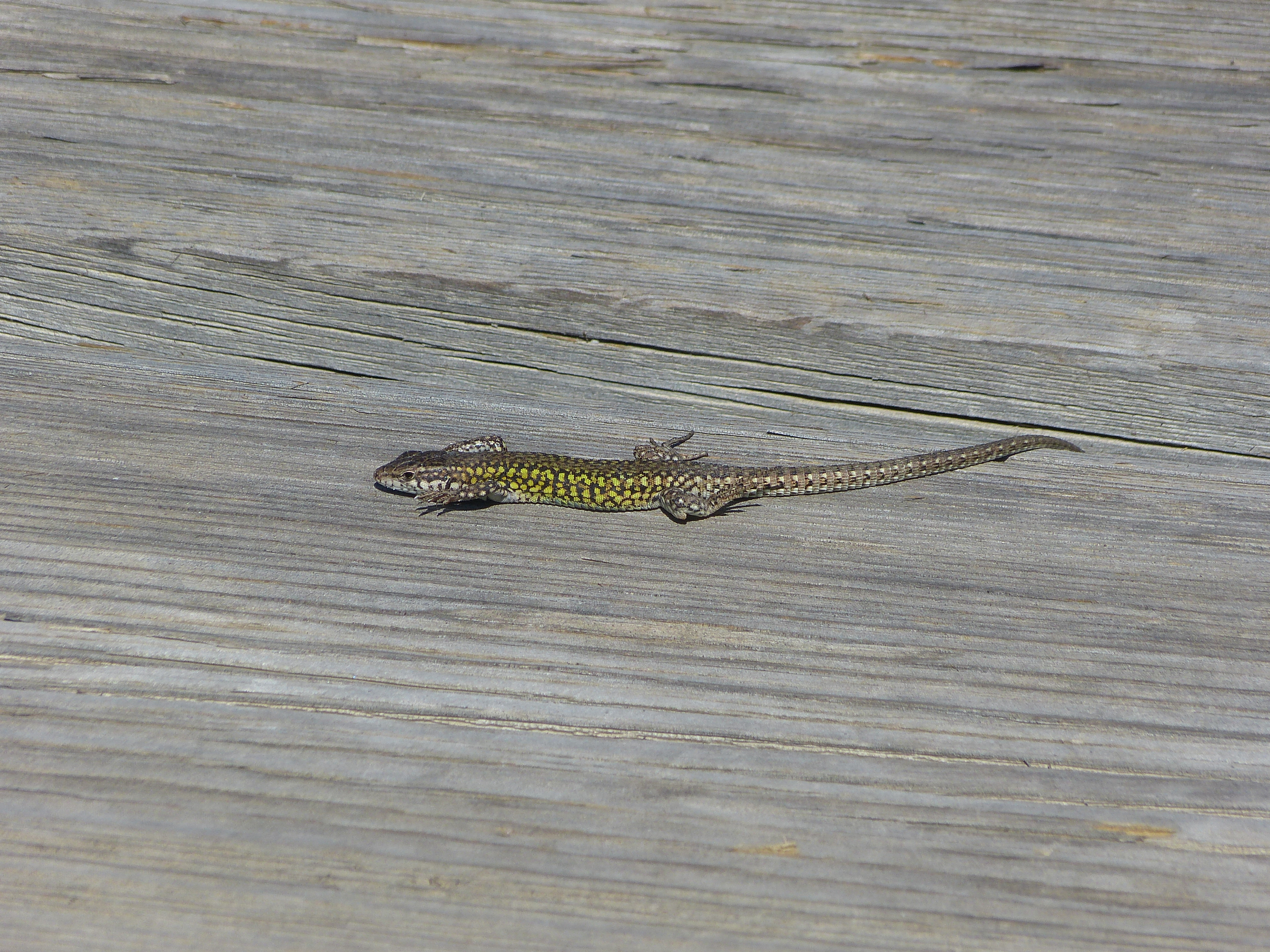In the Natural Area of Doñana coexist 20 squametes reptile species, of which four species are Iberian endemism. The monitoring of the reptile community in Doñana was initiated in 2003 with the aim to collect information about distribution and abundance of reptile, both in space and time. The sampling method used consists in recording all the individuals observed in seven transects in different types of habitats (dunes and Mediterranean vegetation). The reptile census are performed two times during the year, in the months of greatest activity of the reptiles (March-May and September-October). In these samplings, usually lizards and geckos can be recorded sunbathing outside of the vegetation and around footbriges. However, skink, snake or adder species require another sampling methodology which consist in looking under their natural refugies. Normally, these reptiles hide under big stones, but since there are not stones in Doñana, they use the vegetation, burrows or logs and is more difficult detect them.
Because of the low number of observations of this group of reptiles, the Monitoring Team of the Doñana Natural Processes designed a pilot study in spring 2021 to enhance the visibility of individuals by incorporating artificial refuges. The study consists of the inclusion of wood planks of maritime pine and odulines, which integrate well in nature and are good insolation for reptiles. Refuges used were of two types of dimensions (80x60 cm for the small ones and 60x120 cm for the large ones). Refugies were placed in four sites of Doñana Reserve. Two field technicians will sample the refuges at least once by month. Number of individuals by species and other organims present in the refuge or surrroundings are recorded.
During the first samplings in 2021, it has been observed several individuals of Bedriaga's skink (Chalcides bedriagai) and Common wall gecko (Tarentola mauritanica). Potential reptile preys as small mammals, amphibians and scorpions were also observed. However, not snakes or adders were found. This year in February we have recorded one Carbonell's wall lizard (Podarcis carbonelli) endemic of the Iberian Peninsula. The study will take two years, in which we could have enough data to determine the use of the refuges and discuss about the efficiency of this measure to improve the long-term monitoring of the distribution and abudance of reptiles in Doñana.



